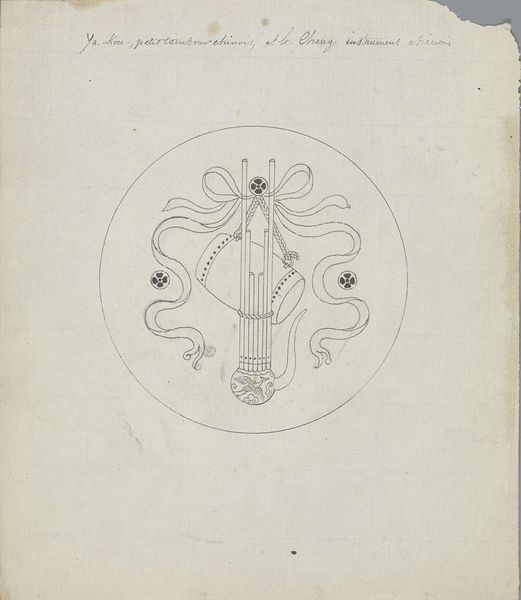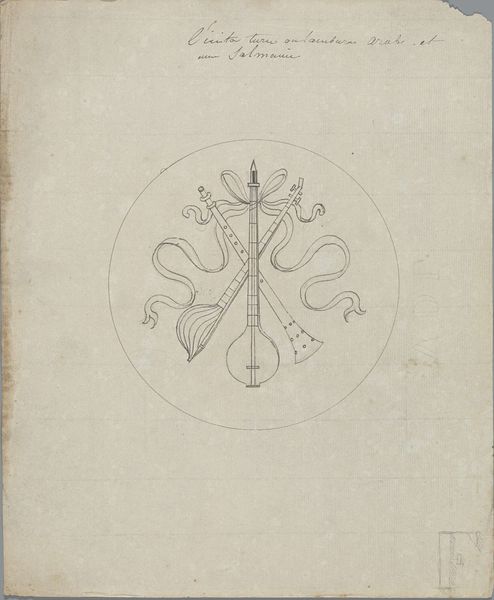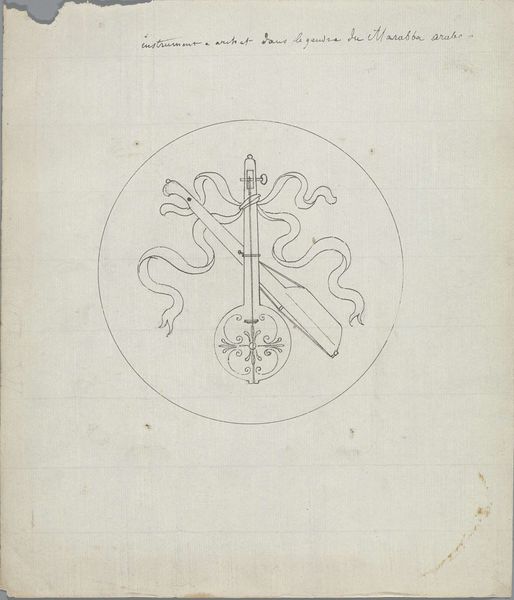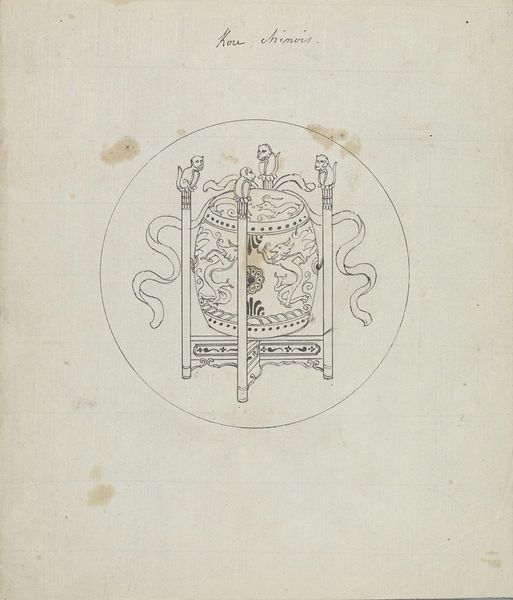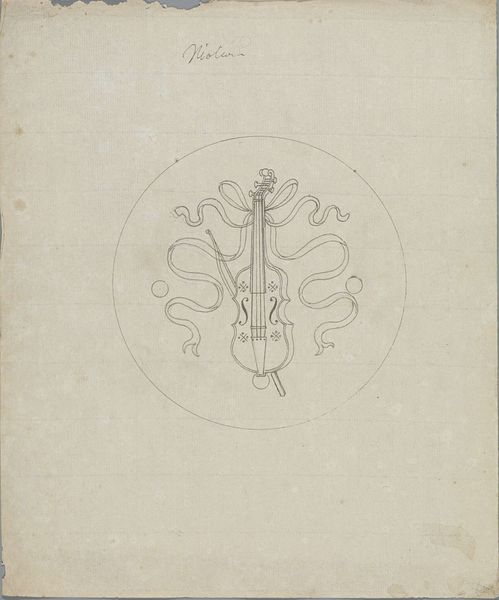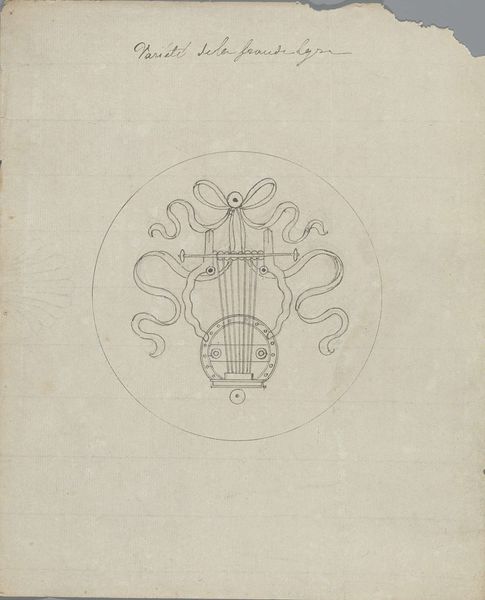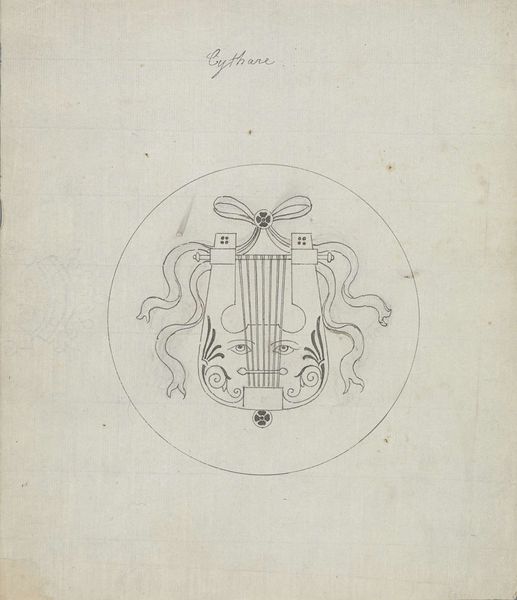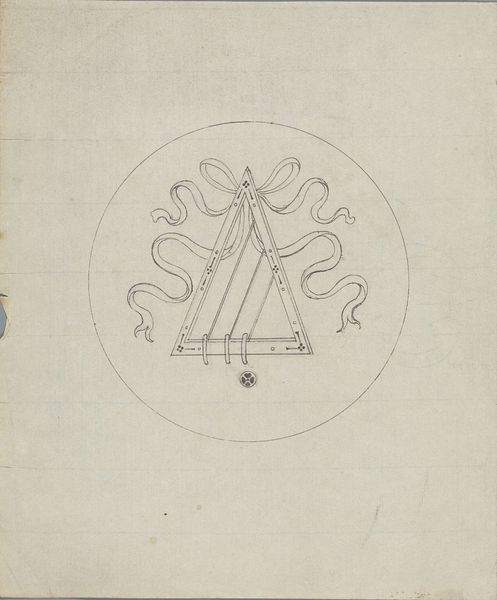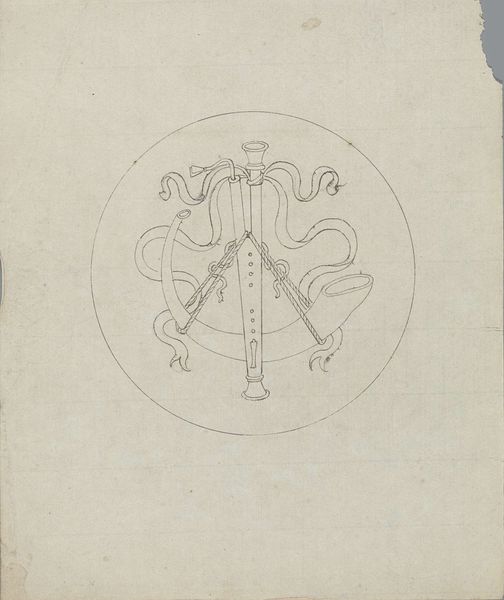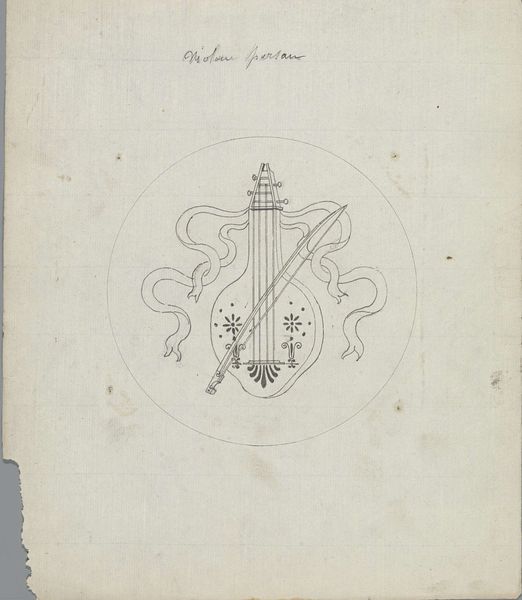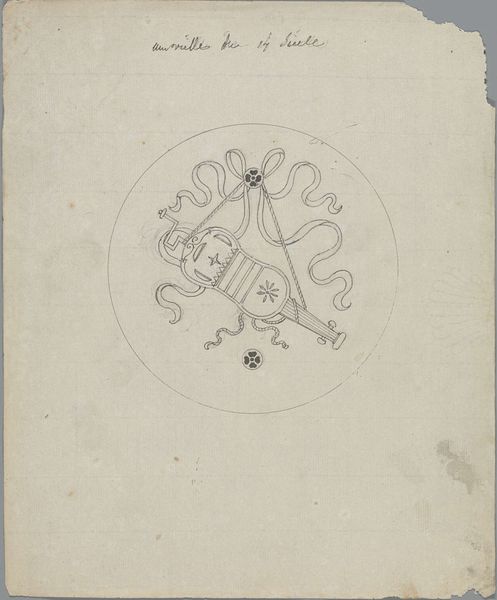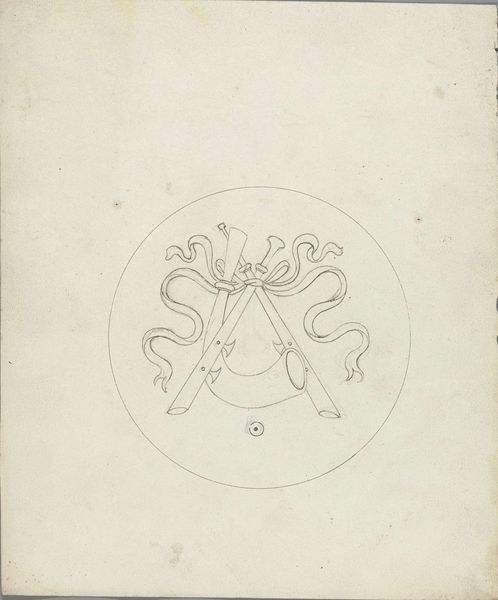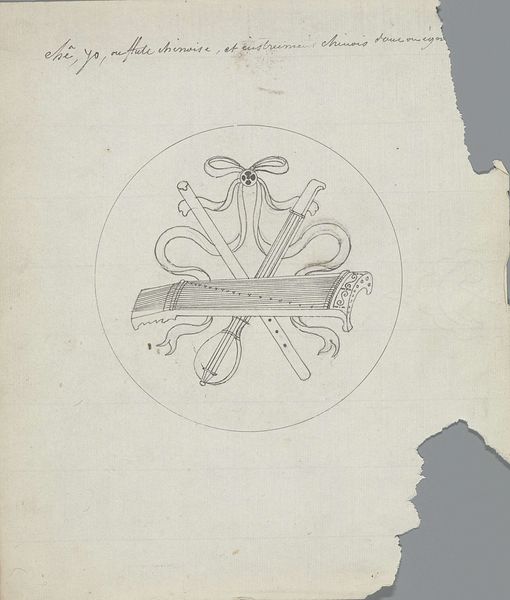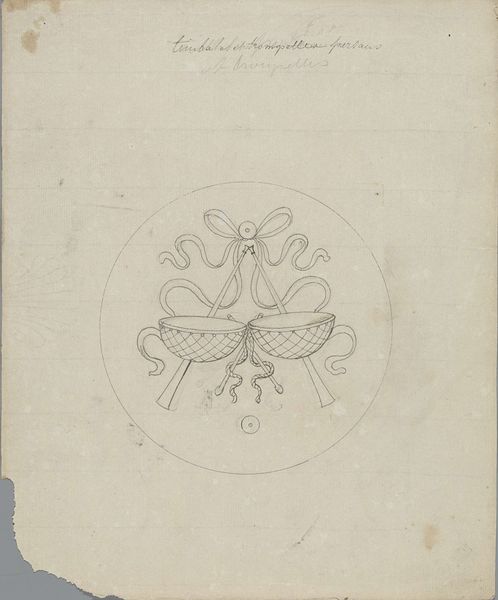
drawing, pencil, graphite
#
drawing
#
romanticism
#
pencil
#
line
#
graphite
#
sketchbook drawing
Dimensions: height 253 mm, width 208 mm, diameter 123 mm
Copyright: Rijks Museum: Open Domain
Editor: So this is "Le Tambour Arabe," a pencil and graphite drawing by Pierre Félix van Doren from before 1828. It’s deceptively simple – two instruments, some ribbons, all in this precisely drawn circle. I’m curious about the labor behind this kind of precise draftsmanship. What do you see in this piece? Curator: Precisely! The question of labor is paramount here. Consider the intense discipline required to master this level of pencil control, especially prior to industrialised graphite production. The materials themselves - the paper, the graphite – they are not neutral. Van Doren had access to resources that dictated who could even engage in artmaking. Editor: That’s a really interesting point, that even simple materials like pencil and paper signify access and privilege. Do you think that also relates to the "Arab" in the title, who might not have such easy access? Curator: Exactly! The title “Le Tambour Arabe” also hints at Orientalism, where European artists represented "the other." Who would own or use the instruments and their materiality, relative to where the materials for its making come from? Were these instruments readily available to those who used them? How does the artist engage with the complex exchange? And look at those meticulously rendered ribbons. Is that labour in tension with the sketched "exotic" content? Editor: That makes me reconsider the way the objects are presented. They're not being played, not in use. Just presented, almost like trophies. Curator: Precisely! Their value isn't musical, is it? It lies in the meticulous craftsmanship and the cultural narrative being constructed. And let’s consider how this sketch might relate to a larger studio practice. Is it a preparatory sketch for another work? How was Van Doren planning to consume them? The drawing itself becomes a commodity in a market for images. Editor: I didn’t think of it that way, as part of the art market even in its early stages! Now I see how much the materials and even the act of drawing reveal about society and its values. Curator: Indeed, recognizing art as material culture opens exciting paths for inquiry.
Comments
No comments
Be the first to comment and join the conversation on the ultimate creative platform.
